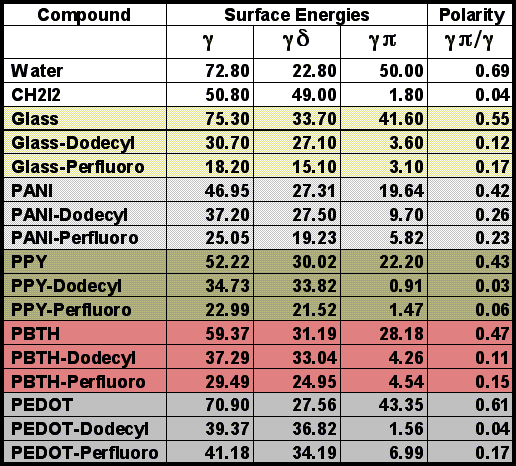
Surface Mounting of Chromophores
A major thrust of our research has been in the development of methods to attach chromophores to the surface of films and fibers. We are particularly interested in attachment to electrically conducting polymers, as this give us a method to alter the chromophores oxidation state or to subject it to an electrical field. The optical response of a chromophore to an electric field is highly dependent upon its molecular orientation. One way to insure consistent sharp color change is to assemble the chromophores on or very near the surface of the film or fiber. Thiols are powerful nucleophiles that might serve as anchors for attaching molecular devices to conducting polymers. The mechanism and extent of the nucleophilic attack will determine how useful this process will be in a given system.
The following figure suggests how a chromophoric array, might be assembled
in to an organized "near-monolayer" on the surface of a polymer
film or fiber.

In order to demonstrate that such structures could be constructed, we
developed a test system. Films of four conducting polymers (while doped
to their cationic, conducting forms) were immersed for one hour in a THF
solution of an alkanethiol or a fluoroalkanethiol. The films were then rinsed
thoroughly to insure that any adsorbed thiol was removed. The extent of
surface modification was measured by contact angle analysis. The raw data
was analyzed by the method of Wu.

The surface was found to be significantly changed by this process, as indicated by the change in surface energies and polarities.
